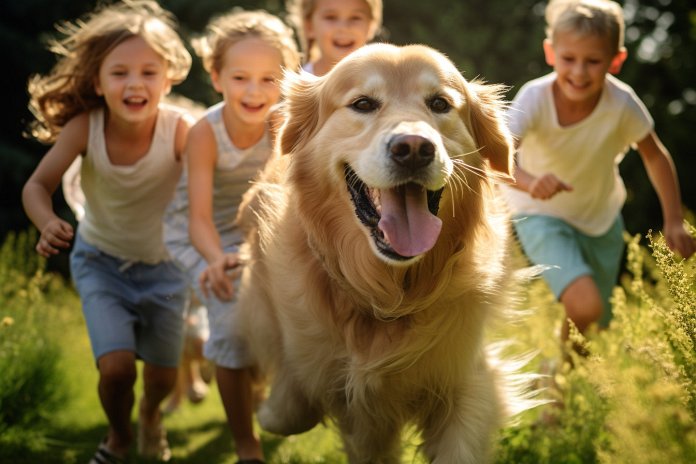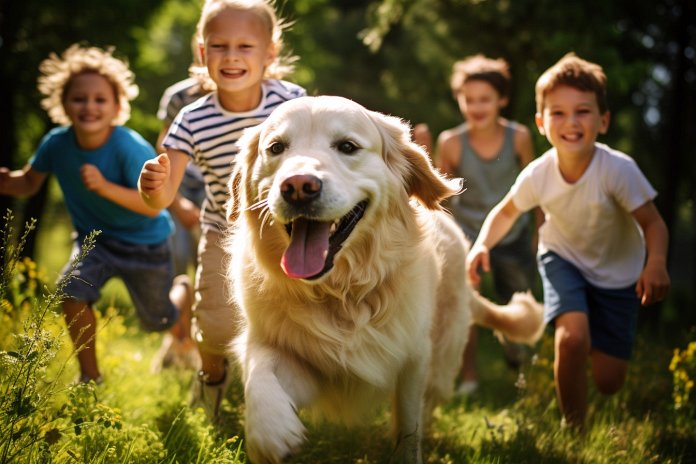
Dogs are intuitive animals with loving hearts and wagging tails. They bring joy to our lives and are there for us in good times and bad. But can dogs tell when we are happy? In this article, we will explore the signs that dogs can sense our happiness and how they use their senses to understand our emotions.
Signs that Dogs Can Tell When We Are Happy
Dogs have the ability to respond to our needs and emotions based on the situation at hand. They can tell when we are happy or sad by using their sense of smell and their keen ability to read our facial expressions and body language. When we are sad, dogs will adjust their behavior to comfort us, while when we are happy, they will mirror our excitement.
Body Language
There are several signs that dogs can read our emotions, including barking, panting, jumping up, wagging their tail, and raising their ears. When we are happy, dogs may also run in circles, copy our excitement, and exhibit positive behavior.
History of Dogs Reading Emotion
Dogs have evolved from wolves and have been living alongside humans for over 15,000 years. They learned to predict and respond to our needs, which made them more intuitive over time. Dogs that were better at responding to humans were preferred and continued to breed, leading to the dogs we know and love today.
The Science of Dogs Reading Emotions
Dogs can pick up on the tone of voice of their humans and recognize different emotions. They are better at reading happier voices and can also interpret the emotions of other dogs, which helps them in social interactions.
Training a Dog to Read Emotions
Dogs can be trained to read emotions, as they naturally pick up on them at a young age. Social interaction and exposure to different settings and people can help dogs learn a broad range of emotions and social cues. Training your dog also has intellectual and bonding benefits.
To train your dog to read emotions, you can engage in various activities and reward them for appropriate behavior. Expressing your emotions and rewarding your dog when they respond to specific emotions will help them associate behaviors with different emotions.
Conclusion
Dogs have an amazing ability to sense our emotions and respond accordingly. By understanding their behavior and training them to read emotions, we can strengthen our bond with them. Dogs truly are our best friends.
“Dogs, with their keen senses and intuitive nature, have the incredible ability to read our emotions and respond accordingly, bringing us comfort and joy in ways that are unmatched by any other being.”

Tips & Things to Know
1️⃣ Dogs have the amazing ability to tell when we are happy or sad based on our facial expressions, body language, and sense of smell. They will adjust their behavior accordingly, either offering comfort or joining in on the excitement.
2️⃣ When dogs can tell we are happy, they will exhibit behaviors such as wagging their tail, gazing at us, and mimicking our excitement. They are even better at recognizing when we are happy than when we are sad.
3️⃣ Dogs can be trained to read emotions, and it is beneficial to their intellectual growth and bonding with us. Social interaction and exposure to different settings and people can help them learn a broad range of emotions and social cues. Positive reinforcement, such as treats and praise, can be used to reward their appropriate responses to our emotions.
Frequently Asked Questions, Answered ✅
1. How do dogs know when we are happy or sad?
– Dogs can tell our moods through their sense of smell, reading facial expressions, and body language.
2. What are some signs that dogs can recognize when we are happy?
– Dogs may wag their tail, gaze at us, mimic our behavior, and exhibit positive behavior.
3. How did dogs evolve to be so intuitive in reading human emotions?
– Dogs evolved from wolves and over thousands of years, those wolves that were better at responding to humans were preferred and continued to breed, resulting in more intuitive dogs.
4. What does the science say about dogs reading emotions?
– Dogs have been trained to recognize different tones of voice and can pick up on happier voices better. They are also better at reading the emotions of other dogs.
5. How can we train our dogs to read our emotions?
– Dogs can be trained to read emotions through social interaction, exposure to different settings and people, and rewarding them when they respond appropriately to specific emotions.